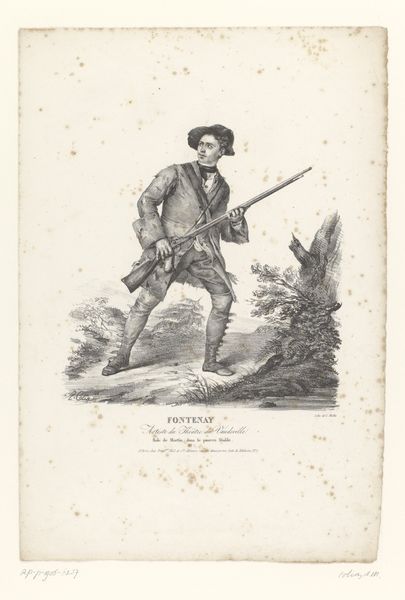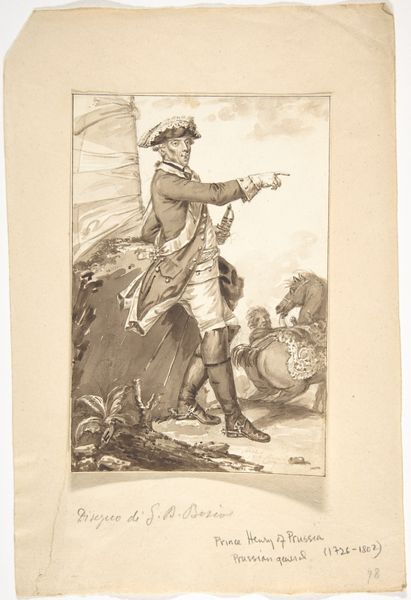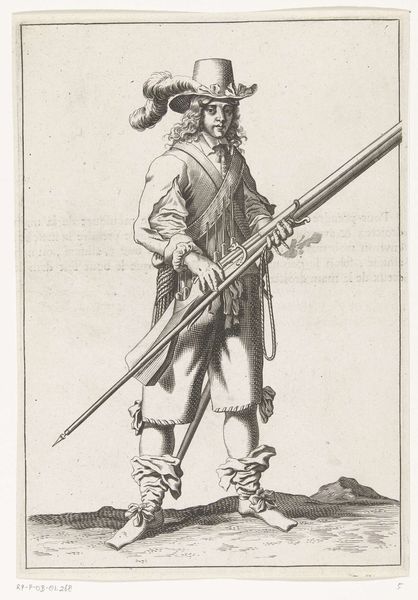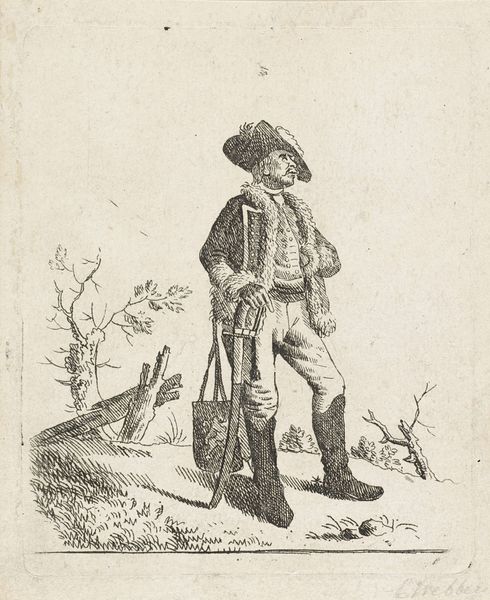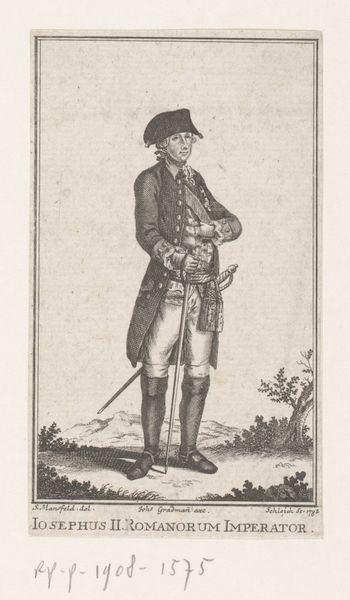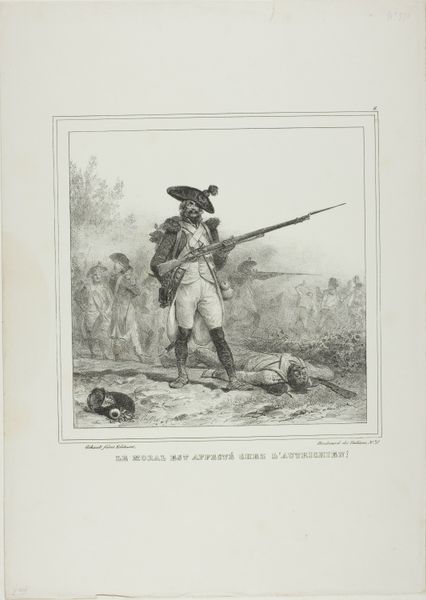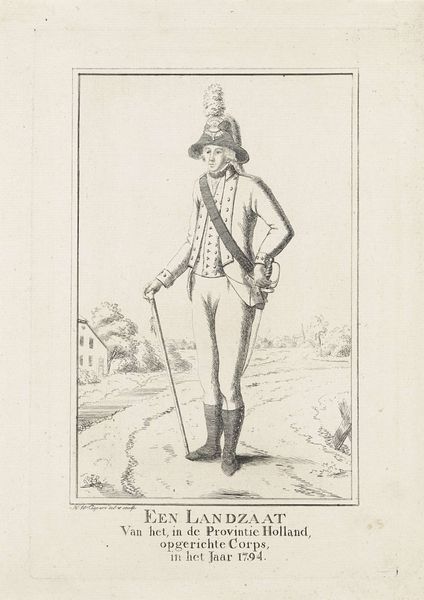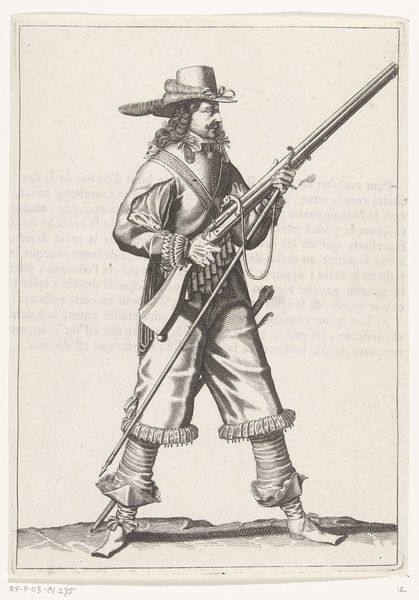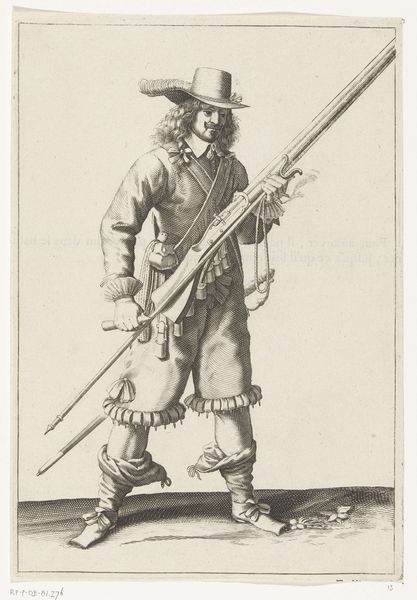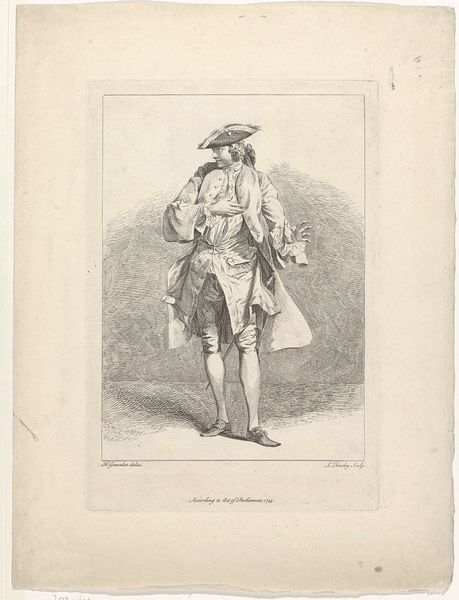
drawing, print, engraving
#
portrait
#
drawing
#
neoclacissism
# print
#
figuration
#
form
#
line
#
genre-painting
#
history-painting
#
engraving
#
realism
Dimensions: height 373 mm, width 250 mm
Copyright: Rijks Museum: Open Domain
Curator: Let’s discuss “Royal Prussian Huntsman with Rifle” by Mathias de Sallieth, created sometime between 1764 and 1791. This piece resides here at the Rijksmuseum, and it is an engraving. Editor: There's something starkly formal about this, almost lifeless despite the active pose. The precision of the line work gives it a removed, documentary feel. I wonder about the paper quality—does it speak to a mass-produced print, intended for wider consumption? Curator: The image certainly projects Prussian militaristic values. Observe the precise details of the uniform—each button, each fold meticulously rendered. The figure isn’t just a man; he’s a symbol of Prussian power and order. That rifle isn’t just a tool; it's an extension of the state. Editor: Exactly. The very act of depicting a soldier in such a clinical manner turns him into a component of the military machine. It invites a consideration of military labour. Was this print part of some kind of recruitment effort? Or perhaps to showcase the might and precision of the Prussian military-industrial complex? Curator: Perhaps both! Remember, this emerged during the rise of Neoclassicism. Artists then looked to antiquity for ideals of civic virtue, discipline, and the state’s authority. That controlled pose, the idealized landscape… all these elements reinforce that sense of order and authority, drawing on historical tropes. Editor: But it's interesting how the artist’s material constraints of engraving shape the meaning. The reliance on line and form, without much shading or atmospheric depth, enhances this stark effect. It highlights the mechanics, the precise lines that defined rank, uniform, and firearm construction in the 18th century. Curator: The engraver certainly elevates the genre. What do you take away after examining the piece through both perspectives? Editor: Thinking about the material production really grounds the ideological messaging. Curator: For me, it reinforces how potent symbols become instruments of state.
Comments
No comments
Be the first to comment and join the conversation on the ultimate creative platform.
